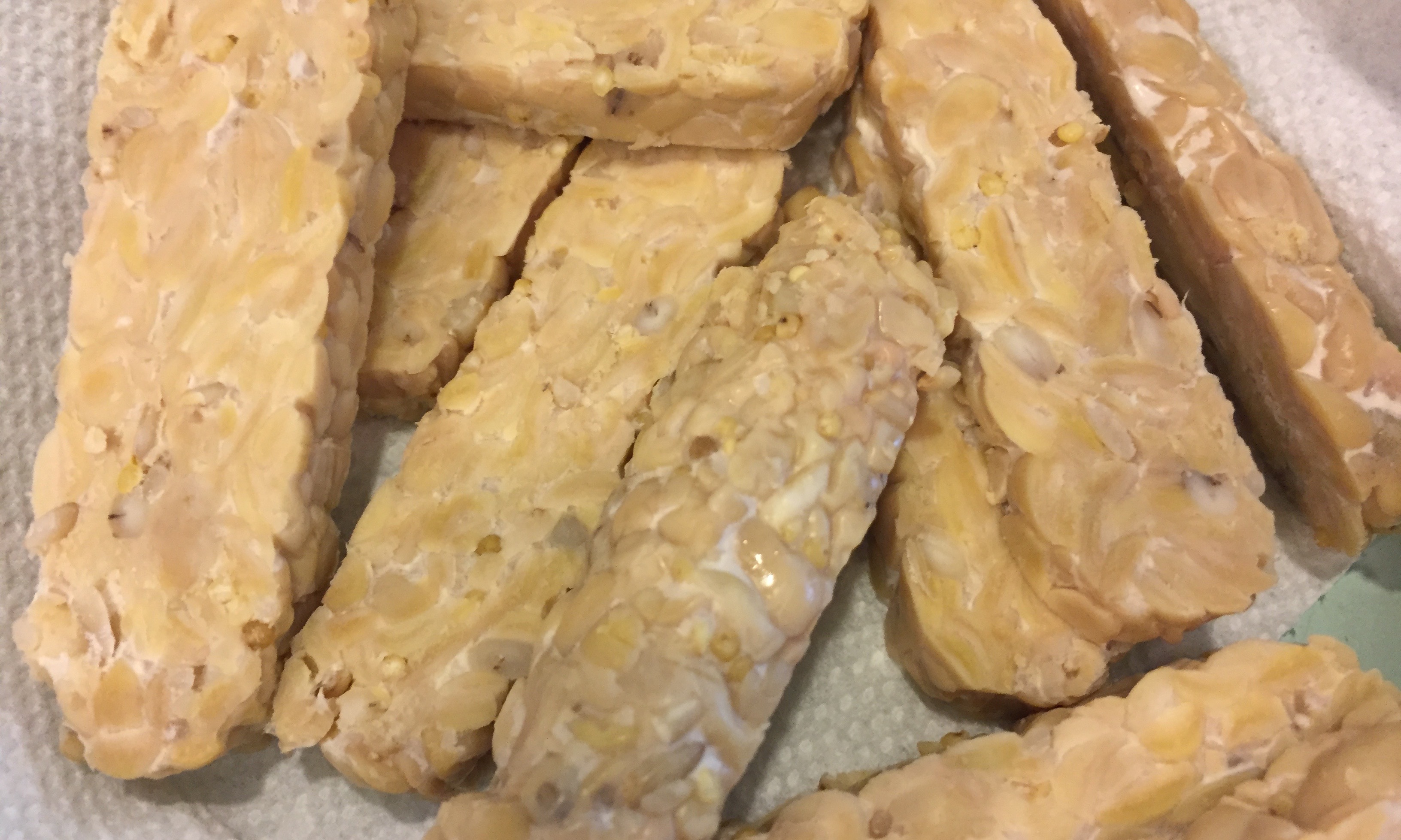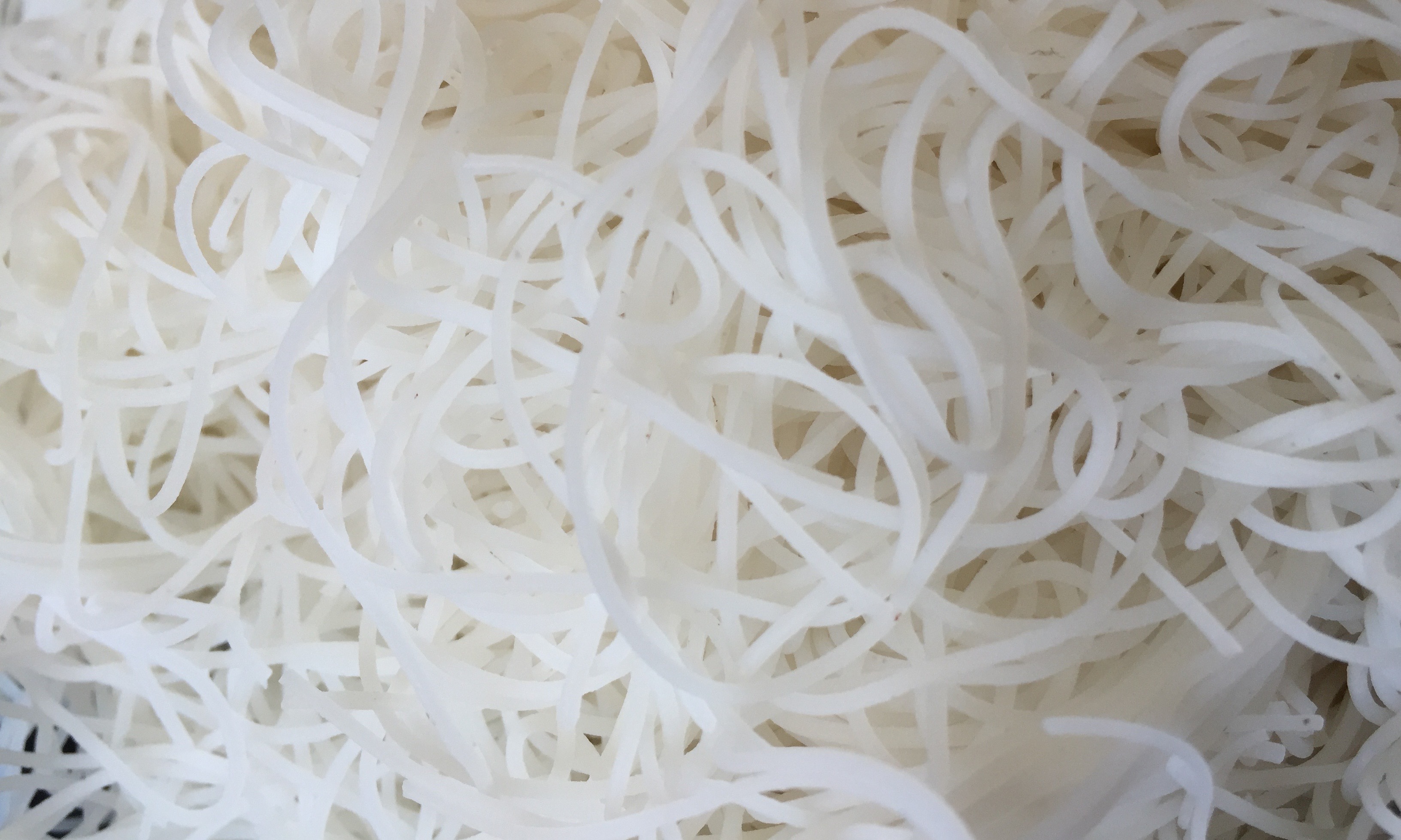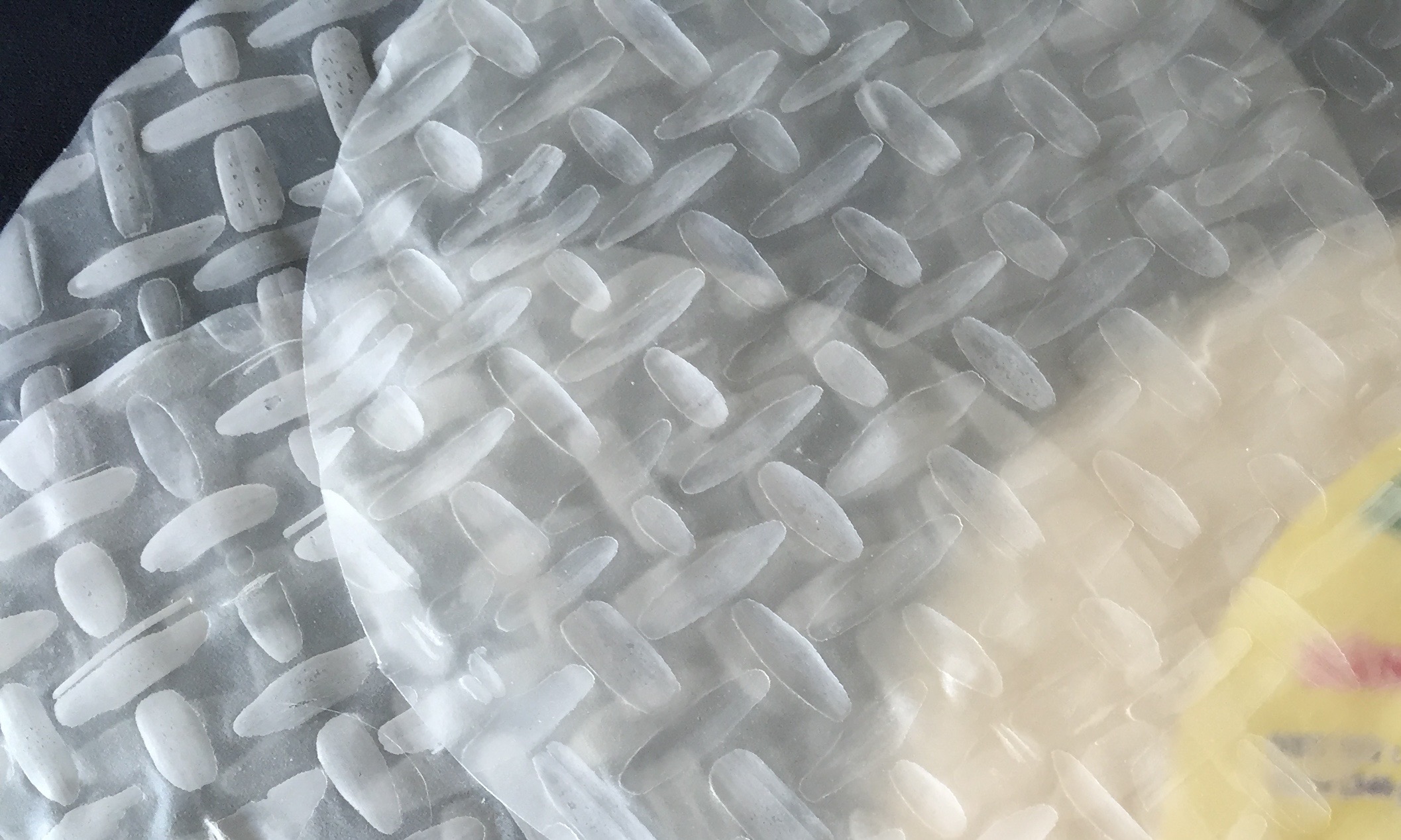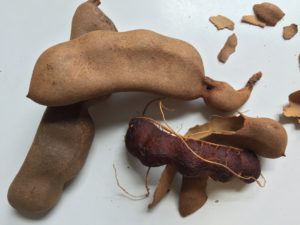
Tamarind used in cooking comes from the flesh of the tamarind pod, shown above. Unlike fresh tamarind, which can be quite sweet–the one above wasn’t–the ingredient tamarind or assam is sour. When cooked with other ingredients it adds a sour but rounded flavor.
Tamarind comes in two forms. The first, labeled here below as wet tamarind, has the pulp preserved and sticky. In Singapore, we use this form. To get two tablespoons of assam, soften about 1 tablespoon of the damp pulp with double the portion of water. Rub seeds in the water to loosen the pulp. Use the liquid after the paste is softened. Discard seeds and fibrous bits.

The other form is a liquefied tamarind concentrate without any pulp or seeds, which Thais favor (second and third photos). I find this convenient to use. Refrigerate after opening. It keeps well. Stir concentrate before scooping out.
Tamarind in these two forms are sold in Asian supermarkets.
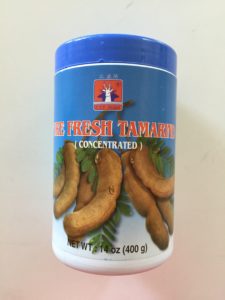
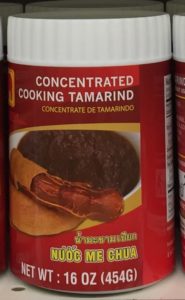
Substitute 1 tablespoon lemon juice for ½ tablespoon tamarind concentrate.

